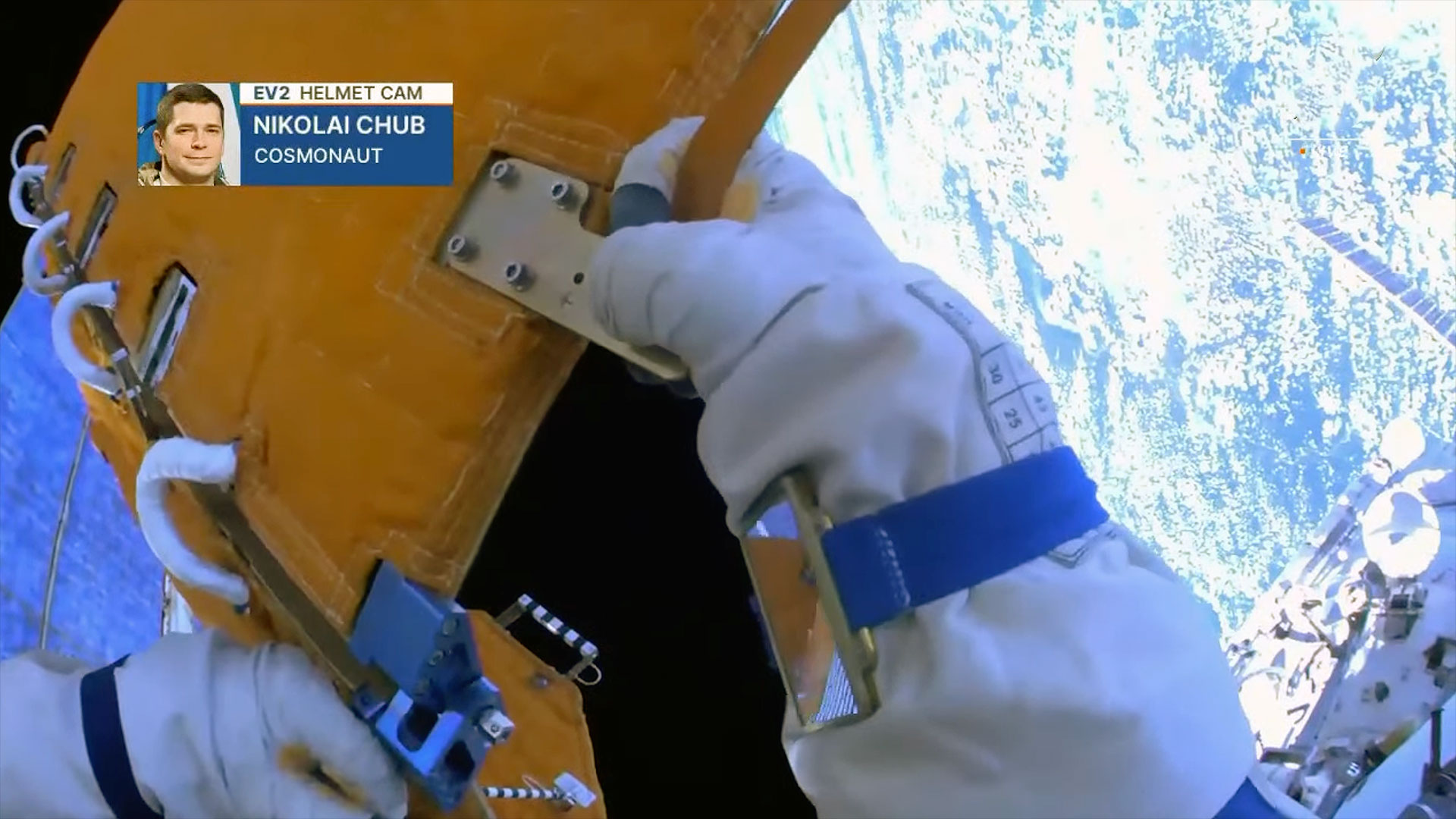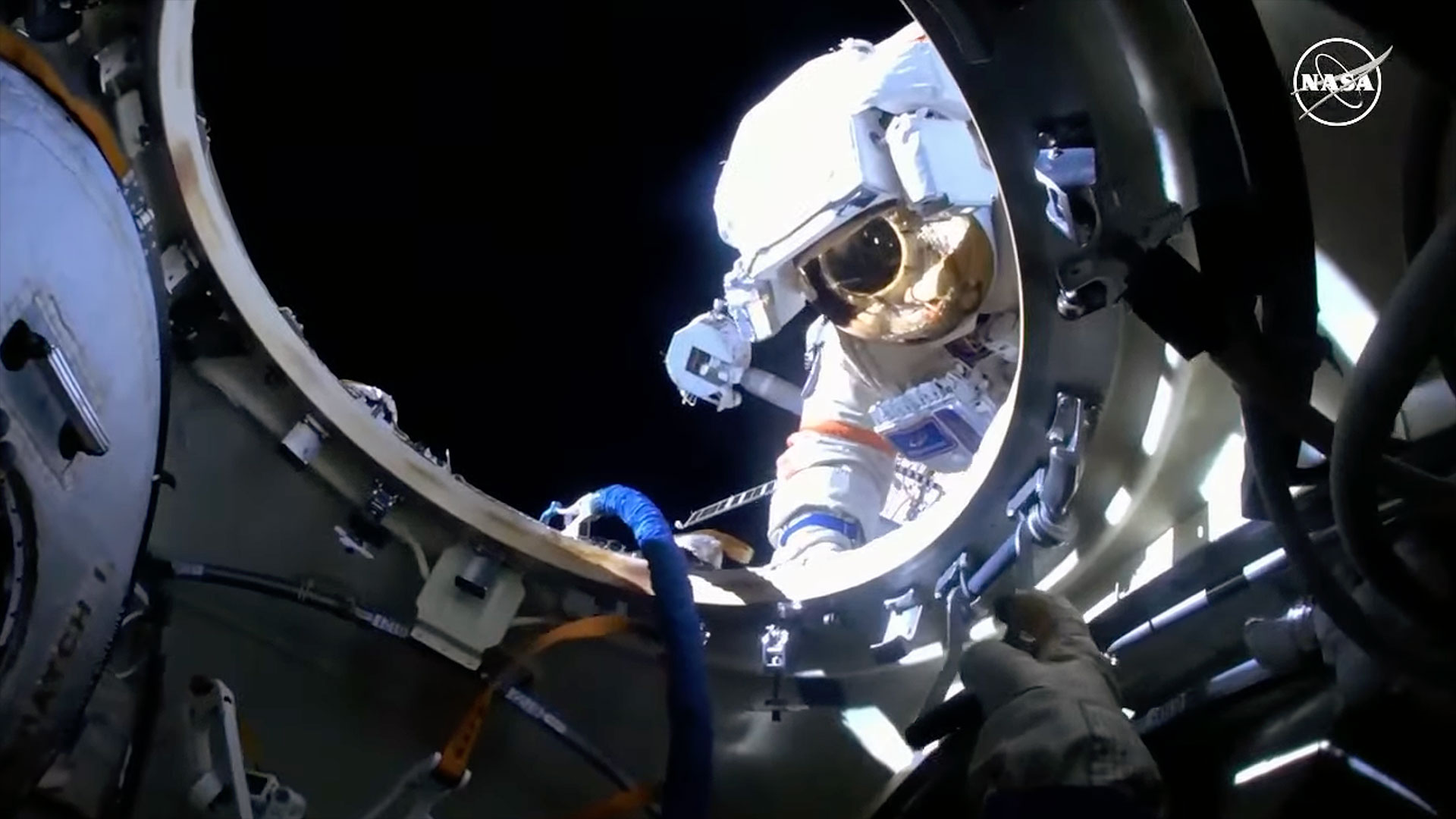Russian cosmonauts make quick work of space station spacewalk
Oleg Kononenko and Nikolai Chub are back inside the International Space Station after just 4.5 hours outside.

Two Russian cosmonauts completed a spacewalk at the International Space Station, wrapping up all of their tasks with time to spare, including the deployment of a radar that they began last year.
Expedition 71 crewmates Oleg Kononenko and Nikolai Chub successfully unfolded and latched the fourth of four panels for a synthetic radar communications system on the Russian Nauka multipurpose laboratory module (MLM) at 11:44 a.m. EDT (1544 GMT) on Thursday (April 25), 47 minutes after the spacewalk began.
"I will try first manually," said Chub, who used his gloved hand to push open the bulky, orange fabric-covered panel. "Latches are closed."
Related: International Space Station — Everything you need to know
The work was quick but necessary to bring the radar system online. The fourth panel failed to automatically unfold when Kononenko and Chub first installed the unit during their previous spacewalk together on Oct. 25, 2023.
The radar will be used to monitor Earth's environment. It was the first science payload to be mounted on Nauka after the module's addition to the space station in July 2021.
With that fix done, Kononenko and Chub moved onto other tasks outside the Russian segment of the orbiting laboratory. The two spacewalkers rotated the direction of a plume impingement unit used to measure the output of gases from the space station's thrusters, swabbed the nearby surfaces for later analysis and returned inside with a biological exposure experiment that will also undergo further study.
Breaking space news, the latest updates on rocket launches, skywatching events and more!
Kononenko and Chub also moved and installed a stowage platform for hardware adapters on the Poisk mini-research module that will support spacewalk activities, including the installation of two devices to measure corrosion on the station's exterior, which the two cosmonauts completed as their last task of the day.
Kononenko and Chub reentered and closed the hatch to the airlock on the Poisk module at 3:33 p.m. EDT (1933 GMT), marking an official end to their spacewalk after 4 hours and 36 minutes. The excursion had been planned to take upwards of seven hours, but the cosmonauts made quick work of all their activities, running about two hours ahead of schedule.
"The EVA was shorter than we expected, but what can you do?" radioed one of the cosmonauts.
The spacewalk was the 270th in support of International Space Station assembly, maintenance, and upgrades, totaling 71 days, 11 hours and 25 minutes. It was the seventh outing for Kononenko, who has now logged 44 hours and 30 minutes on extravehicular activities (EVAs) spanning three decades.
Chub completed his second spacewalk, having now spent 12 hours and 17 minutes outside of the International Space Station.

Robert Pearlman is a space historian, journalist and the founder and editor of collectSPACE.com, a daily news publication and community devoted to space history with a particular focus on how and where space exploration intersects with pop culture. Pearlman is also a contributing writer for Space.com and co-author of "Space Stations: The Art, Science, and Reality of Working in Space” published by Smithsonian Books in 2018.
In 2009, he was inducted into the U.S. Space Camp Hall of Fame in Huntsville, Alabama. In 2021, he was honored by the American Astronautical Society with the Ordway Award for Sustained Excellence in Spaceflight History. In 2023, the National Space Club Florida Committee recognized Pearlman with the Kolcum News and Communications Award for excellence in telling the space story along the Space Coast and throughout the world.


